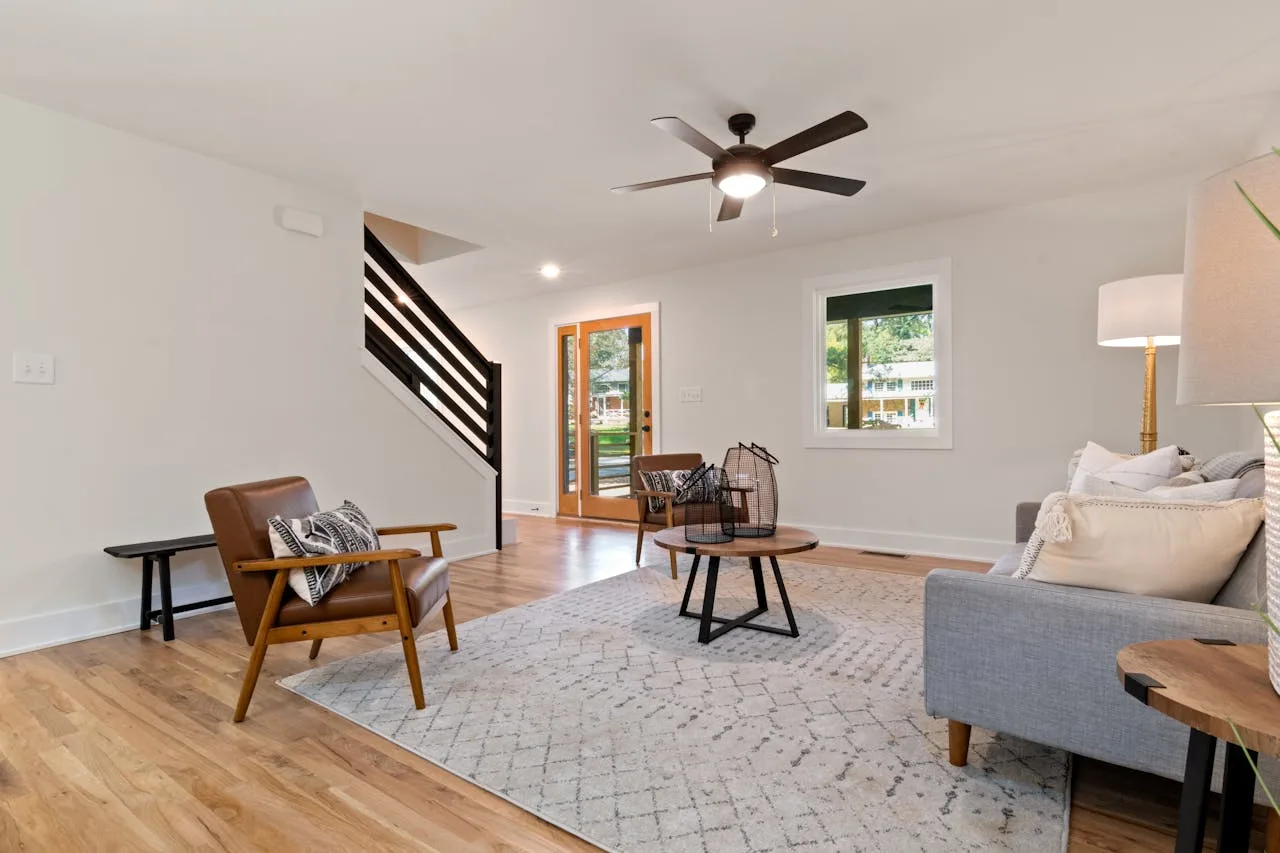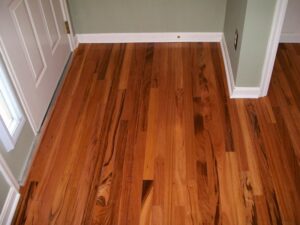When planning a new flooring project, one of the first questions that comes to mind is how much it will cost. Many homeowners quickly realize that flooring installation cost is not as simple as the price of the material alone.
Between labor, preparation, and hidden expenses, the final bill can be higher than expected. Understanding these costs upfront can help you budget wisely, avoid surprises, and make informed decisions about which flooring option works best for your home.
Factors That Influence Flooring Installation Cost
The total expense of installing new floors depends on several factors. Material choice is the most obvious. Hardwood, vinyl, tile, and laminate each have their own price range, and higher-end products naturally drive up the overall cost. For example, engineered hardwood will cost more than standard laminate, while natural stone tile can be significantly more expensive than vinyl planks.
Another key factor is subfloor preparation. If the subfloor needs leveling, moisture barriers, or repairs before installation, this adds both time and labor to the project. Skipping this step can lead to long-term issues, such as warping, squeaking, or uneven surfaces, so contractors often recommend addressing it upfront even if it increases the project total.
Room size and layout also matter. Open spaces are quicker to install, while rooms with intricate corners, staircases, or irregular shapes require more cutting and adjustments. Even something as small as a hallway transition can add to the labor time. These details are why estimates can vary so widely between homes.
Flooring Labor Cost and Regional Variations
Labor is a major part of the total expense, often making up 30% to 50% of the bill. Flooring labor cost depends on where you live, the complexity of the project, and the skill level required for the material.
Carpet generally has lower labor fees because installation is straightforward, while tile and hardwood are more labor-intensive. Tile requires precise cuts, grout application, and setting time, while hardwood often involves sanding, sealing, and finishing. Vinyl planks, although durable, can also involve careful preparation to ensure seams lock correctly.
In some regions, higher demand and limited contractor availability can raise labor rates significantly. Urban areas like Dubai may have higher rates than rural regions because of increased demand and higher living costs for contractors. Always ask for a detailed breakdown of labor charges to understand how much of the final price is tied to workforce expenses versus material costs.
Flooring Installation Cost Per Square Foot Explained
Most professionals calculate the cost to install flooring on a per-square-foot basis. This method provides a clear idea of how material and labor combine to form the total price. Vinyl or laminate may run on the lower end, while hardwood or natural stone can be several times higher per square foot.
For example, a basic laminate flooring installation might average between AED 20 to AED 30 per square foot, while hardwood can range from AED 40 to AED 70 per square foot depending on the wood type and finish. Tile costs vary widely, often starting lower but increasing if patterns, mosaics, or premium materials are used.
It is also important to confirm whether the per-square-foot estimate includes preparation, adhesives, and finishing touches. Some quotes focus only on the installation itself, leaving you with additional bills later for necessary steps like sealing, underlayment, or baseboards.

Average Flooring Installation Cost Across Different Materials
When looking at averages, there are clear differences between materials. Carpet and laminate often fall at the lower end of the scale, making them appealing for budget-friendly renovations. Vinyl has grown popular as a mid-range option that offers durability and water resistance at a reasonable price.
1. Hardwood Flooring Installation Cost
Hardwood is usually at the top of the price spectrum. The hardwood flooring installation cost reflects both the premium material itself and the specialized labor required. Hardwood often requires acclimation before installation, sanding, and finishing work, all of which add to the total expense. Exotic hardwoods or patterned designs increase the price further.
2. Vinyl and Laminate Costs
Vinyl plank flooring is seen as a versatile option. It is water-resistant, durable, and comes in a wide range of styles. Laminate, while slightly less durable, provides the look of wood at a fraction of the cost. Both options typically sit in the mid-to-low range compared to hardwood.
3. Tile and Stone Installation
Tile and stone installations vary greatly in cost. Ceramic tile is generally affordable, but natural stone or custom designs raise the total significantly. These projects also demand precise labor, adding to the average flooring installation cost.
By comparing these materials side by side, homeowners can identify which option aligns with their budget while still meeting their lifestyle needs.
Flooring Removal and Installation Cost Considerations
If you already have flooring in place, removal adds another layer of expense. Old carpet, tile, or hardwood must be taken up carefully to avoid damaging the subfloor. This can involve specialized tools and additional labor hours.
Disposal fees may also apply depending on local regulations. For example, carpet with adhesive backing may require chemical removal, while ceramic tile can be heavy and costly to dispose of. The flooring removal and installation cost combined is often overlooked in initial budgets, yet it can significantly affect the bottom line.
Some contractors include removal in their estimate, while others charge separately, so it’s best to confirm before signing any agreement. Factoring this step into your budget ensures you are not caught off guard once the project begins.
Hidden Costs Homeowners Should Anticipate
Beyond the obvious, several hidden costs can impact your flooring project. Furniture moving, delivery fees, trim replacement, and stair installation are often billed separately. Stairs, in particular, require precision and can add substantial costs due to the extra labor.
Moisture testing and underlayment may also be required for certain flooring types, particularly in basements or ground-level rooms where humidity is an issue. Without these, floors may buckle or develop mold.
Permits are sometimes required in certain areas, especially if structural adjustments are involved. While this is less common, it is another factor to keep in mind when planning your budget.
Tips for Managing Your Flooring Budget Effectively
Careful planning makes a big difference when it comes to controlling costs. Comparing quotes from multiple contractors, asking for itemized estimates, and clarifying what is included can prevent budget surprises.
It also helps to choose materials that fit your long-term lifestyle. While hardwood may be costly, it lasts for decades with proper care and increases property value. Vinyl or laminate may be more affordable upfront, but consider how often you may need to replace them in high-traffic areas.
Some homeowners also reduce expenses by preparing their homes before installation. Removing old flooring, moving furniture, and clearing the work area can save labor charges if contractors charge separately for these tasks.
Balancing durability with cost gives you the best value in the long run. Instead of focusing only on the initial figure, think about how the material will perform over the next ten to twenty years.
Conclusion
Installing new flooring is an exciting investment, but it comes with costs that go beyond the price tag of the material itself. By understanding labor, preparation, and hidden expenses, you can make smarter decisions and avoid unexpected bills.
At Floor Guys, we help homeowners in Dubai navigate these decisions with confidence. Whether you’re considering hardwood, vinyl, tile, or laminate, our team provides transparent estimates and expert service to fit your budget. Contact us today through our website, phone, or email to learn more about your options and schedule a consultation for your next flooring project.






